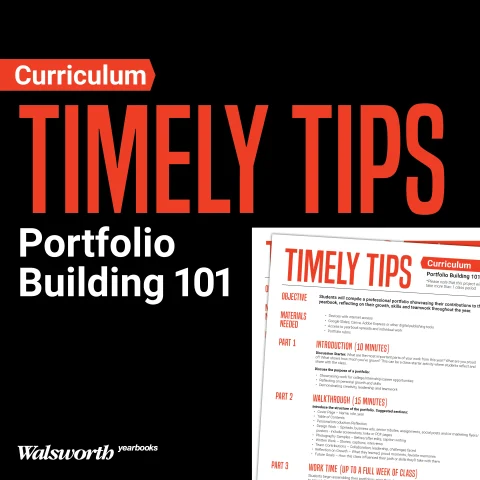Nothing is quite as frantic as a badly organized yearbook room at deadline. Usually, most advisers have more than enough staff and more than enough time to make deadlines manageable. However, advisers’ main problem seems to be not having time to sit down and develop a plan for optimum staff efficiency. Therefore, with apologies to David Letterman, I would like to share my top 10 ways to improve staff development.
10. Make it an honor to be on yearbook staff.
If any breathing individual can be on yearbook staff, there is an intrinsic lack of pride in the task and the product. If your administration does not support try-outs or teacher recommendations, perhaps you need to make the administration aware of research that has found that an average of 10 people look at each yearbook published; therefore, it is the No. 1 public relations tool of your school.
9. Do not get caught up in being another staff member yourself!
No matter how desperate you become, do not complete layouts for your staff. If they know you will, they will put you in situations where you must.
8. Do not arrange staff so editors/staff can “pass the buck.”
I do not like co-editors because of this issue. After my editors design the ladder, my staff draws numbers from a hat. Seniors get the lowest numbers, then juniors. Beginning with the person who drew the number 1, my staff chooses the layout they would like to do. Each person is completely responsible for that spread. Others may certainly help them, but ultimately, at deadline time, one person is responsible for all pictures and copy.
7. Design section templates either before or immediately after school starts.
So much time is wasted at the beginning of the year if editors have not designed templates. Consider offering incentives to editors for working during the summer or on a teacher workday.
6. Be suspicious of “down” time.
All staffs have time when they feel they do not have anything to do. From the first day of school, until the final deadline, there is always something to do. Look for what is lurking!
5. Break layouts into manageable segments.
Have a copy deadline, a photo and caption deadline, and a spread deadline, instead of one final deadline. Students have a much easier time performing in increments.
4. Let the whole staff assist with grading.
When one of my staff members has a deadline, copy is assigned about two weeks out. Each member draws two staff member names from the hat. The staff member’s first copy submission is given to those two people. I devised a 10-point grading sheet that covers the main elements I want copy to contain. The “readers” must mark and grade the first submission by the next day. The author can use their comments and suggestions to improve the copy before submitting it to the adviser. The grades the students assign do not count toward the author; instead the graders are graded on their grading. That way they take the assignment seriously instead of giving an easy A or being unnecessarily mean.
3. Schedule weekly editor/staff evaluations on the progress of spreads.
Each section editor is assigned a day of the week. Every staff member who has a spread due in that section must report in on the status of his spread at that point.
2. Empower your editors.
Choose gifted people and trust them to do their job. That sometimes means letting things go into the book that do not fit your personal taste.
1. Celebrate success!
When the staff does a good job, reward them with a party. I go to a discount grocery and get sub rolls and deli meats and cheese, chips, and drinks. Too many times we fuss at our staff when they let us down, but we forget to reward them for meeting or exceeding expectations.



